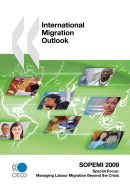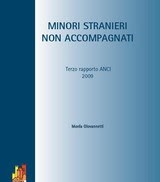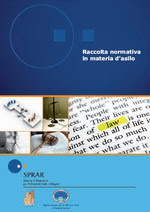June
2014
The Handbook on European law relating to asylum, borders and immigration is jointly produced by the European Court of Human Rights and the FRA. It examines the relevant law in the field of asylum, borders and immigration stemming from both European systems: the European Union and the Council of Europe. It provides an accessible guide to the various European standards relevant to asylum, borders and immigration.
Downloads:
The handbook is the second joint publication of this kind following a first handbook on non-discrimination issued in 2011. It is based on the case law of the European Court of Human Rights and the European Court of Justice as well as on the relevant EU regulations and directives. It is also a first point of reference on the European Social Charter (ESC) and other instruments of the Council of Europe.
It is designed to assist legal practitioners at national and European level, including lawyers, judges, prosecutors, border guards, immigration officials and others working with national authorities, as well as non-governmental organisations and other bodies that may be confronted with legal questions in any of the areas the handbook sets out to cover.
If you have any comments on the handbook or suggestions for improvements for upcoming versions of the publication, please send an email to migration@fra.europa.eu.
Looking at the situation of foreigners who are referred to by the EU as third-country nationals, the handbook covers a broad variety of topics, structured in the following nine chapters:•
- access to the territory and to procedures (see Chapter 1)
Provides an overview of the regimes applicable to those who wish to enter the territory of a European state. This chapter also sets out the main parameters that states have to respect under ECHR law as well as under EU law when imposing conditions for access to the territory or when carrying out border management activities.
- status and associated documentation (see Chapter 2)
Looks at status and documentation of different groups of migrants.
- asylum determination and barriers to removal: substantive issues (see Chapter 3)
Considers when an individual must not, or may not, be removed from a state due to requirements of EU law and/or the ECHR.
- procedural safeguards and legal support in asylum and return cases(see Chapter 4)
Looks at the procedure for examining applications for international protection (asylum procedures), as well as procedures for expulsion or return.
- private and family life and the right to marry (see Chapter 5)
Examines the right to respect for private and family life as well as the right to marry and to found a family. It also looks at questions relating to family regularisation and reunification as well as safeguards to preserve family unity.
- detention and restrictions on the freedom of movement (see Chapter 6)
This chapter deals with deprivation of liberty and restriction on the freedom of movement of asylum seekers and persons in return procedures. It lists the necessary procedural and substantial safeguards that have to be respected to ensure that detention is lawful and not arbitrary. It also covers alternatives to detention and concludes by providing some guidance relating to detention conditions and compensation for unlawful detention.
- forced returns and manner of removal (see Chapter 7)
Examines the manner in which an alien is removed from a state. Legal barriers to removal, such as barriers to removing asylum seekers, are examined in Chapters 1, 3 and 4.
- economic and social rights (see Chapter 8)
Provides a brief overview of both EU and Council of Europe standards relating to access to economic and social rights, namely the right to work, education, housing, healthcare and social protection.
- persons with specific needs (see Chapter 9).
Looks at certain groups of individuals who could be classified as especially vulnerable and requiring specific attention. Both EU and ECHR law may afford extra protection to persons with specific needs.




















Nessun commento:
Posta un commento